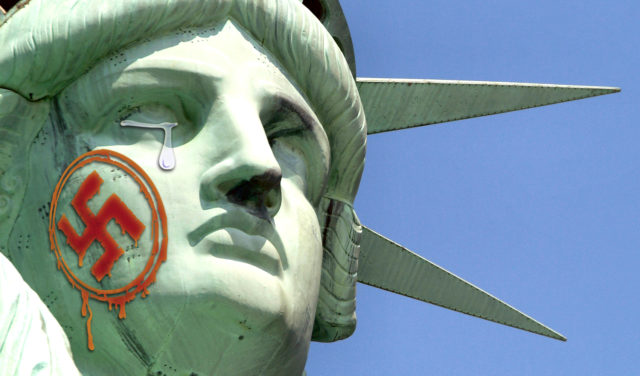
Racially tinged fear mongering about crime was crucial for Donald Trump’s campaign and now his presidency. In his inaugural address, Trump talked about how “crime and gangs and drugs” are causing “carnage” in America’s cities.
His dark view clashes with reality. According to the FBI’s Uniform Crime Reporting program and the Bureau of Justice Statistics’ National Crime Victimization Survey, rates of violent crimes like murder, sexual assault and robbery have all declined sharply since 1993.
Before Trump ran for president, it seemed that a fragile bipartisan elite consensus was emerging for a less punitive criminal justice system. For several years, we have seen an alarming number of cellphone videos on TV of unarmed black men being killed by police. There have been large demonstrations against police brutality, and a new civil rights movement called Black Lives Matter has emerged.
Nevertheless, public opinion polls reveal a deep divide between blacks/Latinos and whites on attitudes toward the police. Trump has exploited this situation. He has claimed that proposals for police reform are “anti-law enforcement.” He claims the reformers are waging a “war on police.”
In July, Trump spoke to an audience of police officers on Long Island. He told them it was OK to rough up suspects and said “please don’t be so nice.” His remarks drew significant applause and some laughter. The White House insisted he was just clowning around. Nevertheless, many police officials across the country criticized Trump.
Attorney General Jeff Sessions is turning Trump’s positions into policy. In February, the Department of Justice reinstated the use of private prisons for federal incarceration, reversing an order issued by Obama only months earlier to “phase out” their use. In May, Sessions instructed federal prosecutors to seek the harshest possible penalties for those found guilty of violating the law.
In August, Sessions announced a roll back of the Obama administration’s restrictions on the transfer of surplus military equipment to police departments across the nation. That includes grenade launchers, bayonets, high-caliber guns, camouflage gear and armored personnel carriers used on the battlefields of Iraq and Afghanistan.
The restrictions came in 2015 in response to the controversy over the militarization of law enforcement provoked by images from Ferguson, Missouri. After an unarmed 18-year-old black man, Michael Brown, was killed by a white cop in that city, peaceful protesters were confronted by large armored vehicles and police in riot gear carrying assault rifles.
Sessions has ordered the Justice Department to launch a comprehensive review of all police reform activities, including any existing or planned consent decrees. The edict comes at a crucial time for several major cities, including Baltimore and Chicago, where the Justice Department determined that the police had engaged in unconstitutional patterns of racial discrimination and excessive force.
In a number of cases during the Obama administration, the Justice Department negotiated formal reform agreements with the cities, usually in the form of a consent decree, which were then overseen by a federal court.
In Newark, a consent decree resulted in a big reduction in crime. Its monitor, Peter Harvey, said reform can help cops do their jobs.
“Remember, it’s the community that helps you police,” Harvey said. “Very few cities have enough cops to patrol a city 24-7 effectively, 12 months a year. You need the community to help you.” He pointed out that won’t help if you “place community residents in chokeholds where they die, and then turn around and say, ‘Well, we want to be your friend.’ Those are inconsistent messages.”
Trump’s and Sessions’ fear mongering and lies have alarmed criminologists. In an unusual move, the executive board of the American Society of Criminology (ASC) — the nation’s leading academic organization in the field — issued a statement declaring that the administration’s early actions and assertions on criminal justice “demonstrate an incongruity between administrative policy efforts and well-established science about the causes and consequences of crime.”
The group’s board said it is “concerned by the actions of the Trump administration in its dissemination of misinformation and development of uninformed policy initiatives. Not only are these initiatives unscientific, they are likely to engender further cynicism about and discontent with the criminal justice system that is harmful to citizens, to members of law enforcement, and to other sources of social control.”
It’s unlikely that Trump will listen to them. His law enforcement hero is Joe Arpaio, the lawless former sheriff of Arizona’s Maricopa County, who has a long record of sadistic and racist behavior. He rushed through a pardon of Arpaio, who was convicted of criminal contempt for willfully disobeying a judge when she ordered him to stop racially profiling Latino drivers and detaining them without charges. Arpaio detained Latinos in what he called a “concentration camp” with inhumane conditions and torture. This was, as New York Times columnist Paul Krugman put it, “Fascism, American Style.”
Trump would like to do to America what Arpaio did to Maricopa County.
This opinion column does not necessarily reflect the views of Boulder Weekly.














